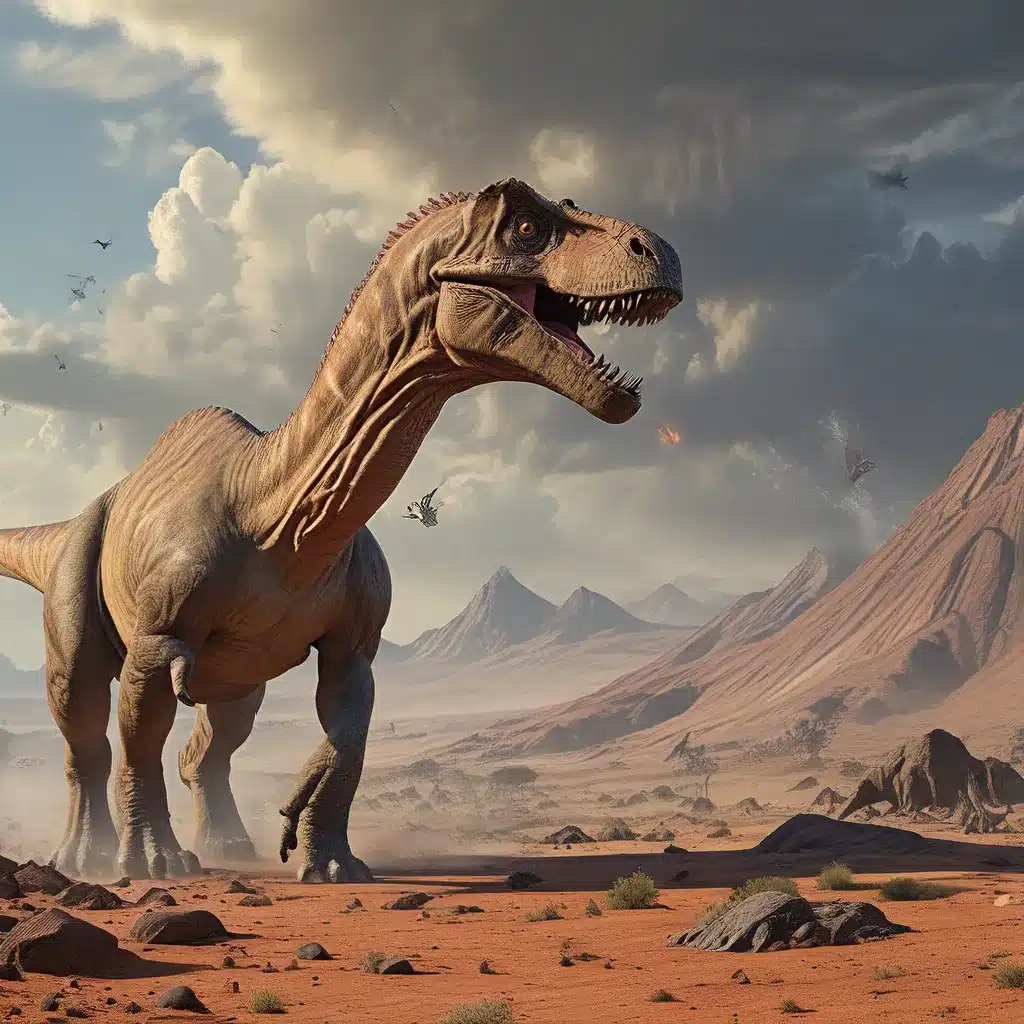
The fate of the dinosaurs has long captured the imagination of scientists and the public alike. What could have caused the sudden and dramatic disappearance of these magnificent creatures that once dominated the Earth? The search for answers has led researchers to uncover a wealth of knowledge about the Cretaceous-Paleogene (K-T) extinction event, which wiped out the non-avian dinosaurs around 66 million years ago.
The Extinction Debate: Theories and Evidence
For decades, the leading theory for the extinction of the dinosaurs was the asteroid impact hypothesis, proposed by scientists Luis Alvarez and Walter Alvarez in the 1980s. They suggested that a massive asteroid, estimated to be around 6 miles in diameter, collided with the Earth, triggering a series of global events that led to the demise of the dinosaurs. This theory was supported by the discovery of the Chicxulub crater in Mexico, which provided physical evidence of a large-scale impact event.
However, in recent years, the scientific community has explored alternative explanations for the K-T extinction, including the role of volcanic activity and climate change. Some researchers argue that a prolonged period of intense volcanic eruptions in the Deccan Traps region of India, which occurred around the same time as the asteroid impact, may have contributed to the dinosaurs’ downfall by altering the global climate and disrupting the food chain.
The Diversity of Dinosaur Life
Before we delve deeper into the extinction event, it’s important to appreciate the remarkable diversity of dinosaur species that thrived during the Mesozoic Era, which spanned from the Triassic period (252-201 million years ago) to the Cretaceous period (145-66 million years ago).
Dinosaurs ranged in size from the Microraptor, a small feathered creature the size of a modern-day pigeon, to the Patagotitan, a colossal sauropod that exceeded 120 feet in length and weighed up to 70 tons. They also exhibited a wide variety of adaptations, from the armor-plated Ankylosaurus to the long-necked Diplodocus. This diversity allowed dinosaurs to thrive in a wide range of environments, from dense forests to arid deserts.
The Sudden Disappearance of the Dinosaurs
Despite their resilience and adaptability, the dinosaurs ultimately succumbed to a cataclysmic event that marked the end of the Cretaceous period. The Cretaceous-Paleogene (K-T) extinction event was a global catastrophe that led to the extinction of an estimated 75% of all plant and animal species on Earth.
Recent research has provided a more detailed timeline of the extinction process. According to a study published in the journal Science, the Rancho La Brea Tar Pits in southern California offer a unique window into the events leading up to the extinction. The researchers used radiocarbon dating to determine that the populations of large mammals, including bison, horses, camels, and ground sloths, remained stable in the region until around 13,250 years ago. However, a sharp decline followed, with these species becoming extinct between 13,070 and 12,900 years ago.
The researchers attribute this rapid decline to a change in the environment, marked by warming, drying, and an increase in wildfires. These environmental changes were likely triggered by a combination of factors, including the asteroid impact, volcanic activity, and possibly even the arrival of human populations in North America, who may have used fire as a hunting tool.
Insights from the Fossil Record
The fossil record provides invaluable insights into the lives and extinction of dinosaurs. Rare fossil discoveries, such as the recent find of a pregnant ichthyosaur (a marine reptile) with an unborn fetus, have challenged our understanding of dinosaur biology and evolution.
According to the Institute for Creation Research, the ichthyosaur fossil “provides evidence that ichthyosaurs gave birth to live young, rather than laying eggs.” This discovery contradicts the prevailing evolutionary theory that ichthyosaurs and other marine reptiles were egg-laying animals, and it highlights the ongoing efforts to unravel the mysteries of prehistoric life.
The Rancho La Brea Tar Pits in California have also been a treasure trove of fossil discoveries, preserving the remains of thousands of individual animals that became trapped in the naturally occurring asphalt pools. This rich fossil record has enabled scientists to study the diets, behavior, and ultimately the extinction of these megafaunal species in unprecedented detail.
Lessons from the Past, Implications for the Future
The study of dinosaur extinction has far-reaching implications for our understanding of the complex interplay between climate, environment, and the fate of species. As the Lost Kingdoms website highlights, the insights gained from the study of ancient civilizations and their interactions with the natural world can inform our approach to addressing modern-day environmental challenges.
The parallels between the environmental changes that contributed to the dinosaur extinction and the climate shifts observed in present-day California are particularly striking. The research at Rancho La Brea suggests that the combination of warming, drying, and increased fire activity was a crucial factor in the demise of the megafauna during the late Pleistocene. This pattern echoes the current environmental challenges faced in many regions, where rising temperatures, drought, and more frequent wildfires are threatening the delicate balance of ecosystems.
By understanding the lessons of the past, we can better prepare for the future and develop strategies to mitigate the impact of human-induced environmental changes on the natural world. The study of dinosaur extinction serves as a powerful reminder of the fragility of life on our planet and the importance of protecting the diversity of species that call it home.


